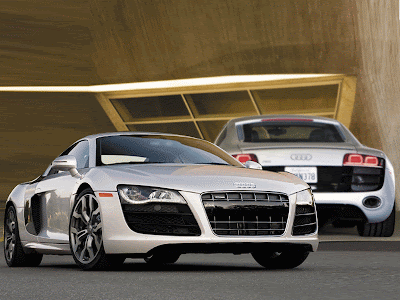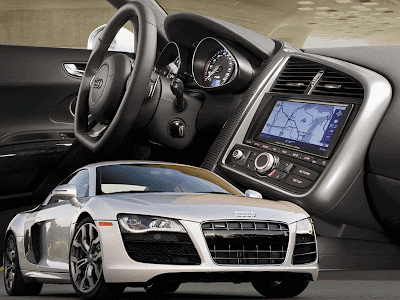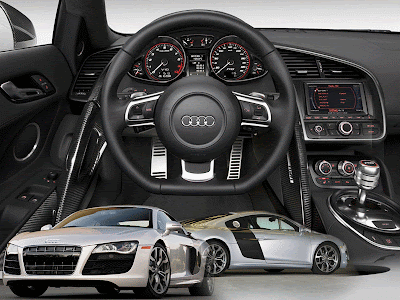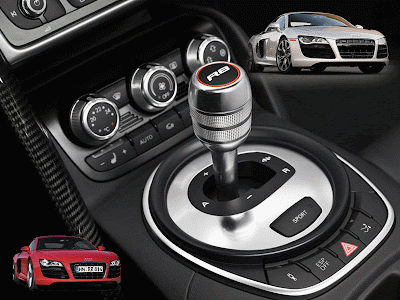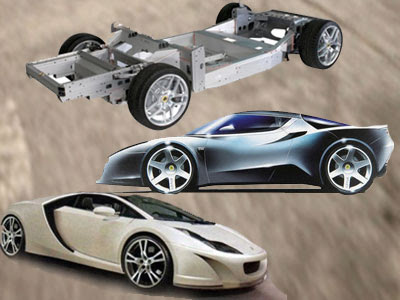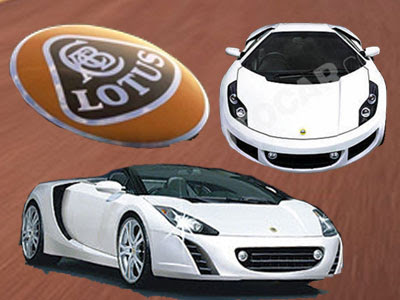2010 Audi R8 V10 5.2 FSI quattro
Audi announced that the price for the highly anticipated 2010 Audi R8 5.2 FSI quattro V10 sports car will be rolled out in Germany in the second quarter of 2009 at a basic price of EUR 142,400. The Audi R8 V10 is the result of cumulative know-how from Audi's string of Le Mans victories. Its naturally aspirated engine combines racing technology such as dry sump lubrication with FSI gasoline direct injection. The ten-cylinder design is the perfect synthesis for impressive top performance, mighty pulling power, and low weight. Starting in 2009, this engine will also prove its potential on the world's racetracks - in the new Audi R8 GT3 racing car Audi is developing for customer teams in conformance with the GT3 rules.
2010 Audi R8 V10 5.2 FSI quattro
Audi R8 V10 5.2 FSI quattro is the next variant of its top-of-the-line model. With the Audi R8, the brand has established itself at the forefront of high-end sports cars from the very start - and now comes the Audi R8 V10. Its 5.2-liter, ten-cylinder engine churns out 386 kW (525 hp) and 530 Nm (390.91 lb-ft) of torque, which makes for breathtaking performance. With superior Audi technologies such as quattro all-wheel drive, the lightweight aluminum body, the innovative all-LED headlights, and its striking design, the Audi R8 V10 takes pole position against the competition.
2010 Audi R8 V10 5.2 FSI quattro
The V10 engine in the production sports car will be almost identical in construction to the one in the racing version. Its displacement is 5,204 cc, at 6,500 rpm it delivers 530 Nm (390.91 lb-ft) of torque, at 8,000 rpm its power tops out at 386 kW (525 hp). The specific power output is 100.9 hp per liter of displacement - and each hp has to propel only 3.09 kilograms (6.91 lb) of weight, because the Audi R8 V10 in the version with the six-speed manual gearshift weighs only 1,620 kilograms (3571 lb). The engine accounts for 258 of these kilograms (569 lb) - that's only 31 kilos (68 lb) more than the V8.
2010 Audi R8 V10 5.2 FSI quattro
The 5.2-liter powerplant uses direct injection according to the FSI principle developed by Audi. The Audi R8 V10 with R tronic gets by on an average of 13.7 liters per 100 km (17.17 US mpg). The Audi R8 V10 5.2 FSI quattro rockets from zero to 100 km/h (62.14 mph) in 3.9 seconds. In the version with the sequentially shifting R tronic it reaches 200 km/h (124.27 mph) in another 8.1 seconds. Even then its propulsive power hardly lessens: it's sufficient to reach a top speed of 316 km/h (196.35 mph). The immense force, the spontaneity and the thrust of the acceleration, plus the sound of the engine - all these impressions coalesce into a breathtaking sports car experience. The V10 plays a concert with growling bass tones and powerful high notes, which grows into a grandiose fortissimo as the engine revs up. This sonorous acceleration doesn't reach its limit until 8,700 rpm.
2010 Audi R8 V10 5.2 FSI quattro
A contributing factor to the wide lead in traction and driving safety of the Audi R8 V10 over the competition is quattro all-wheel drive - it's the superior technology especially for a high-performance sports car. Four powered wheels get more grip than two. They enable the driver to step on the gas sooner when coming out of a curve. It's not only the traction that benefits, but also the transverse dynamics and the stability.
2010 Audi R8 V10 5.2 FSI quattro
